I know this site was done recently by Newage, I thought I'd get down there and have a look for myself as it isn't too far from home.
Here is a link to Newage's report.
The airfield in West Berkshire was opened in the summer of 1940 and began it's role as a dispersal airfield and the home of 15 OTU (Operational Training Unit). Sorties flown were mainly day and night training flights in Wellington Bombers although the primary function of the airfield was to ferry the Wellingtons to Egypt, via Gibraltar and Malta.
On the 16th of September 1940 three bombs were dropped upon the airfield's metalled runways, apparently causing very minimal damage.
On the 4th March 1941 a wellington was attacked by a rogue German fighter as it approached to land.
The airfield was attacked most heavily on the 12th May 1941 with the Luftwaffe dropping 10 High Explosive bombs and 100 Incendiaries. This attack cost the airfield one Wellington and also damaged the flare path and the southern taxiway. This caused problems to RAF aircrews as there were several bombers in flight.
The airfield was used extensively as a glider training base during the latter part of the war, many glider pilots were trained here in preparation for D-Day. The base also had 33 Tiger Moths as training aircraft, and nowadays the airfield is still used by one (not an original from here) which belongs to the current farmer.
In 1945 13 OTU moved in with DeHavilland Mosquitoes and the airfield reverted to being a satellite of RAF Harwell, several miles to the North-West.
Today, little remains. The layout of the airfield can be picked out in Google Earth, and an interesting note is that all three runways converged at the same point. This made the airfield's operational ability quite precarious, as one well placed bomb could render all of the runways useless until repaired.
The site has long since reverted back to agricultural use as Haw Farm, being owned by the Yattendon Estates.There are five pillboxes extant, along with several bomb shelters. Various artefacts remind you of the site's wartime use, bits of twisted metal lie amongst piles of hardcore. Some taxi ways are still in fair quality, whilst others have fallen apart. The runways are barely discernable, one is grassed over and now used by the farmer for his tiger moth and 3 other planes. Another is covered by a strip of trees and another has been reduced to a small track along the north-eastern side of the site.
The nearby village of the same name has changed it's name from the wartime Hampstead Norris to Hampstead Norreys.
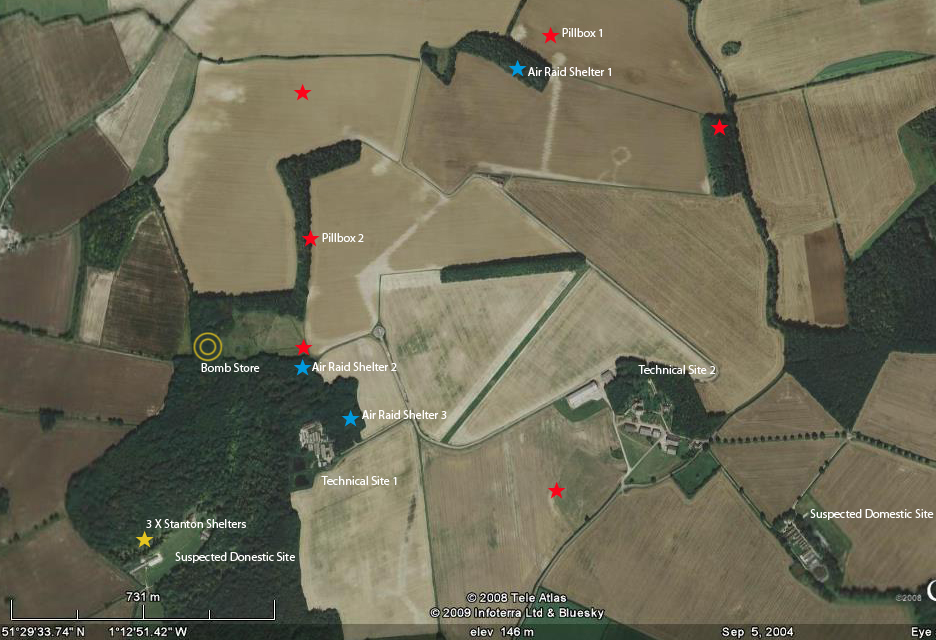
This overview of the airfield shows the remaining features. A Marston shed is extant in Tech site one, the other buildings there are 'modern' but disused animal sheds.
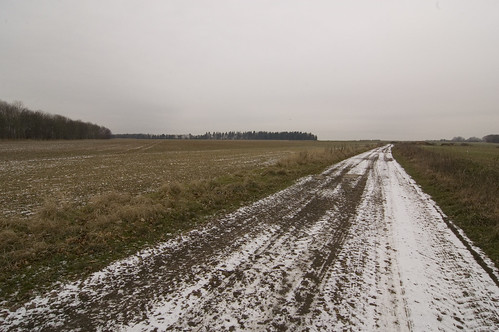
Looking along the North-Eastern runway
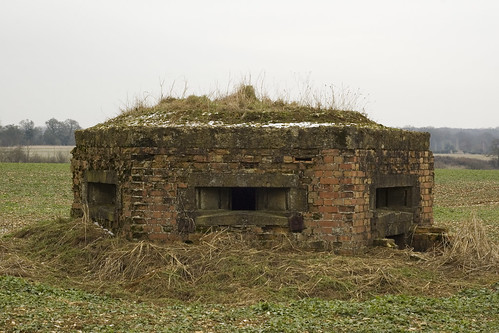
The first, and most obvious structure I could see was this air ministry pillbox(Pillbox1). It is in good condition, bar the rubble inside it. The original armoured door is in place as are several of the embrasure shutters.
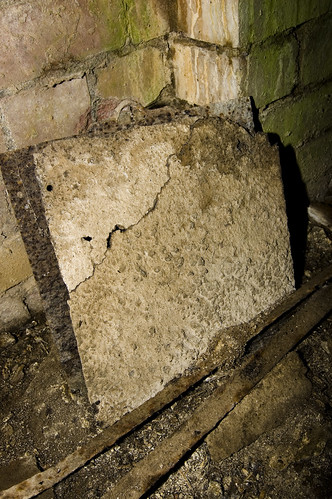
Shutter, on the floor.
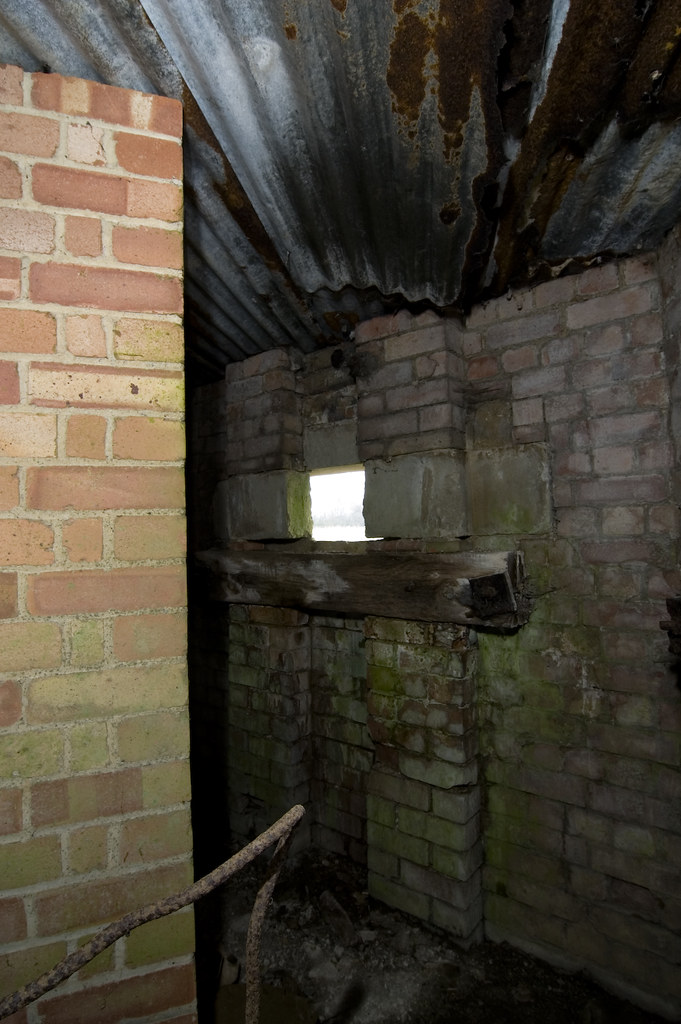
Internal view, note the roof shuttering left in situ.
The first air raid shelter I came across was this one(Shelter1). It is quite overgrown on the outside but inside it is very clean. To my surprise the escape hatch is still there, although somewhat corroded, as is the ladder.
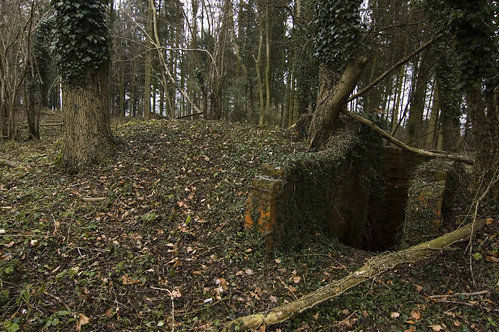
The entrance
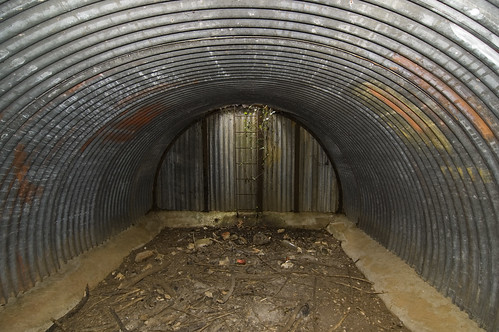
Looking inside the corrguated steel structure to the escape ladder
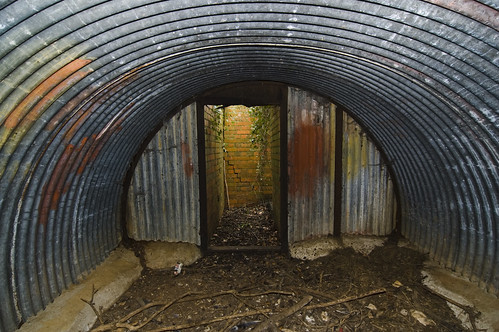
And looking to the entrance
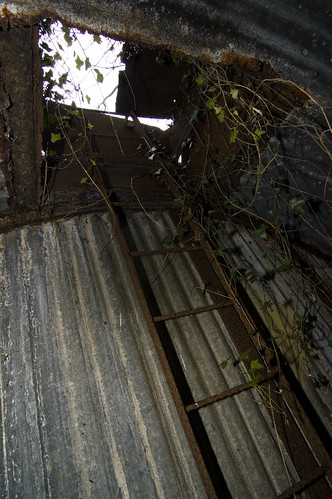
Looking up the escape hatch
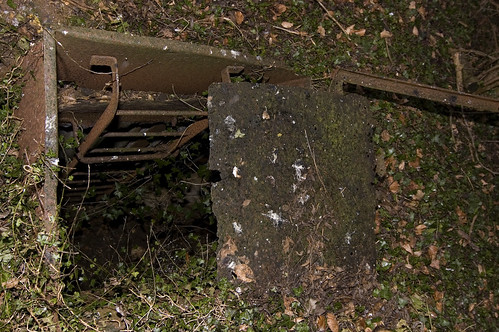
Looking Down the escape hatch.
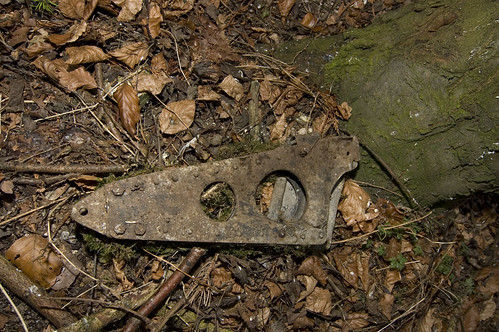
I found this aluminium object nearby, it looks to be part of a wing structure... Could this be from the Wellington lost in the bombing???
The next structure I came across was another pillbox tucked into some woodland (Pillbox2), in similar condition
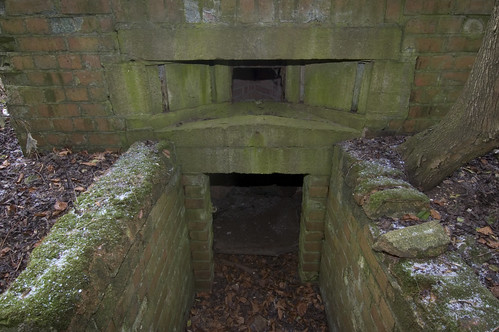
The gun mounts have been removed but some pieces still remain inside the embrasures.
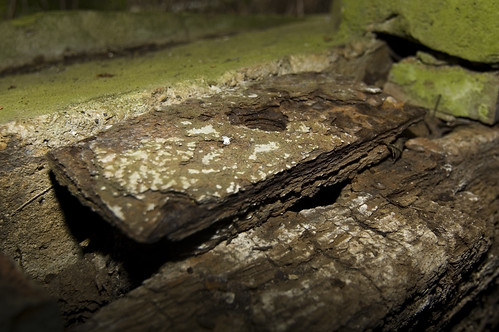
The metal is so badly corroded these don't have long left.
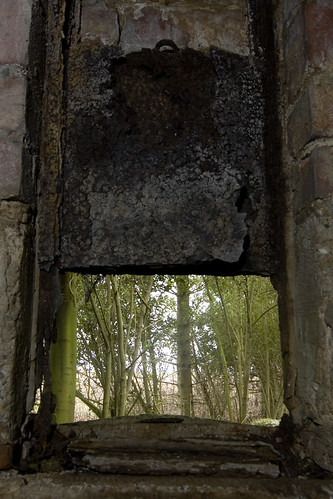
One of the shutters
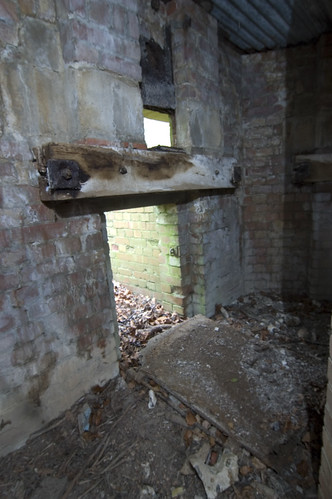
Internal view. There is an X shaped Blast wall and the armoured door was nearly 2 inches thick.
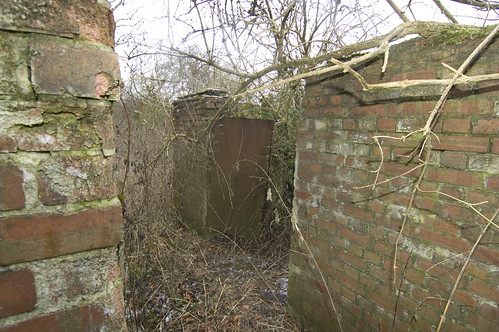
Next to this pillbox is the M+E Plinth, protected by blast walls.The original door is still in place.
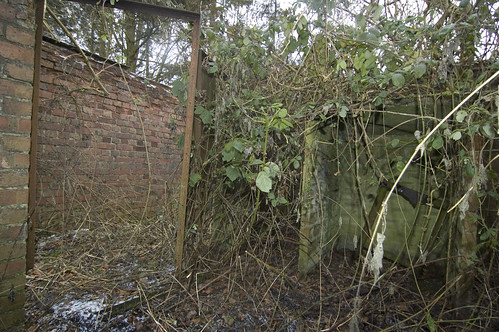
The Elecrtical transformer housing.
The next pillbox (Pillbox3) is looking down a slope on the south-western side of the airfield towards the bomb store. I didn't venture down to the Bomb store as it was out of the way and it was beginning to get dark.
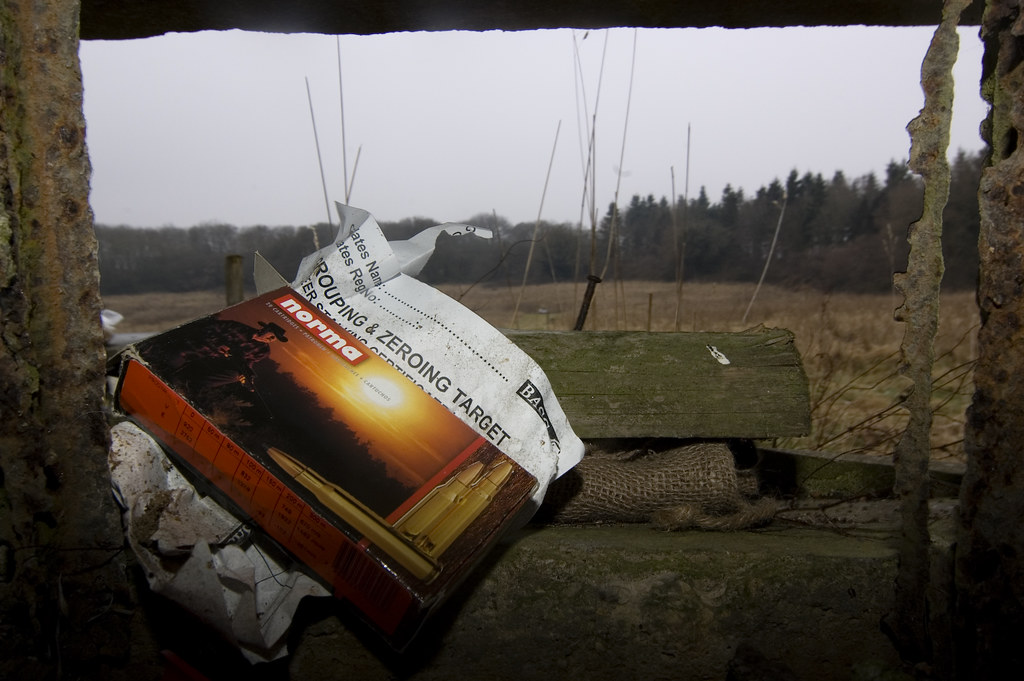
This pillbox has actually seen some action, but from the farmer's .243 winchester rifle instead.
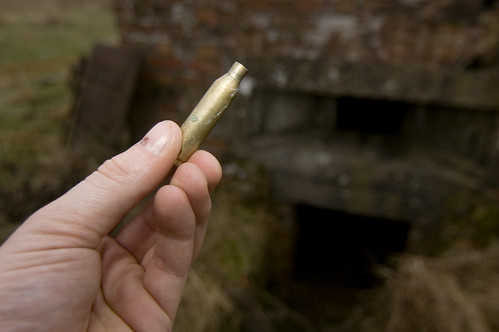
A casing found inside.
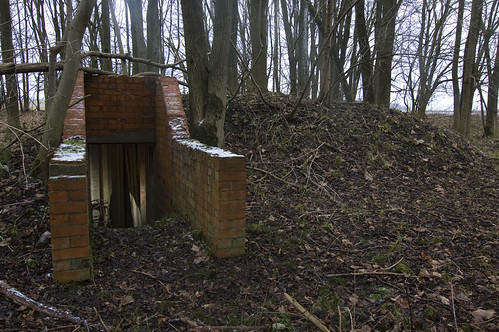
Just to the south of this is a Trianco Air raid shelter (Shelter 2). This is in excellent condition and every piece apart from the brick outer blast walls is made from pre cast concrete.
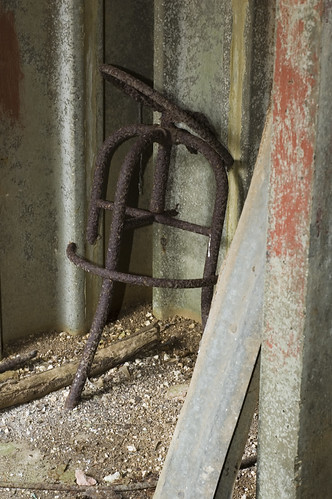
A rusty stool just inside the entrance.
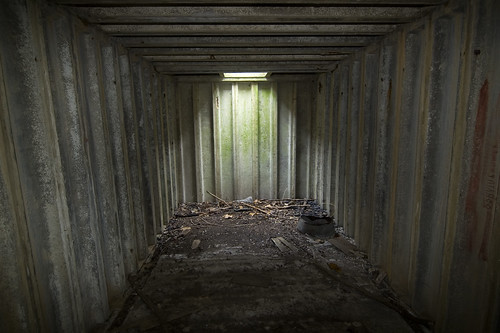
Looking inside.
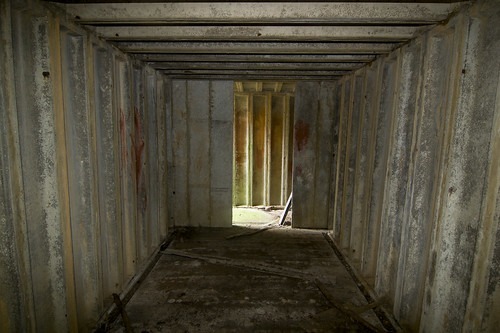
Looking back to the entrance.
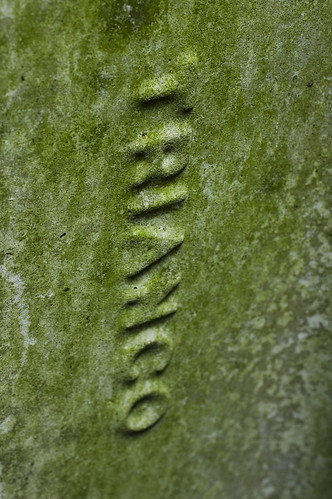
Manufacturers Logo.
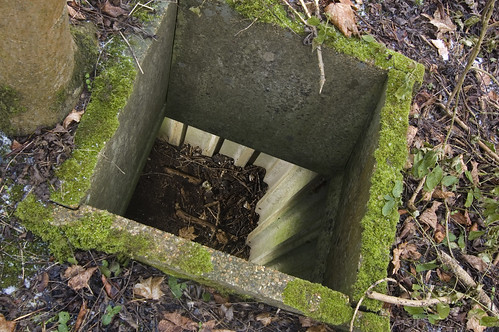
Down the hatch.
Just south of that shelter was the third one, this is located by the entrance to technical site1. This shelter seems older and far more worn than the others. It is a long, double entrance shelter, without any escape hatches. The entrances are quite blocked with rubbish and are quite slippery and dangerous in the snow!
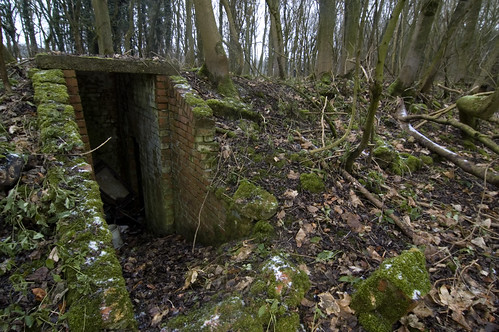
I couldn't believe how many trees were growing out of it.
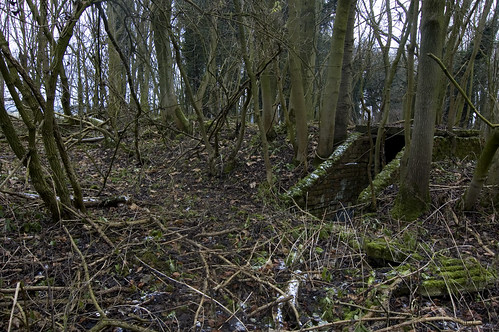
The other entrance.
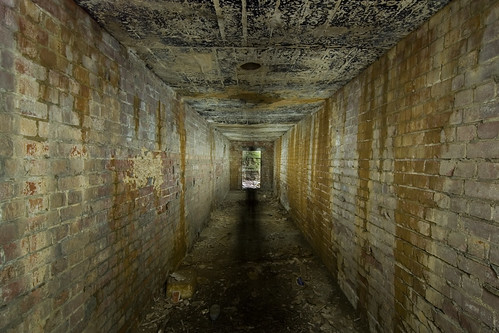
Internally the structure is still sound. The floor looked clean at first...
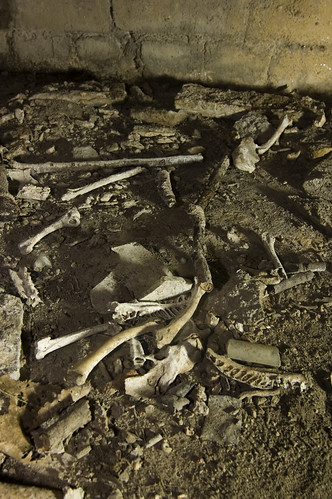
But on closer examination the floor is in fact covered in animal bones. It must be a fox's restaurant.
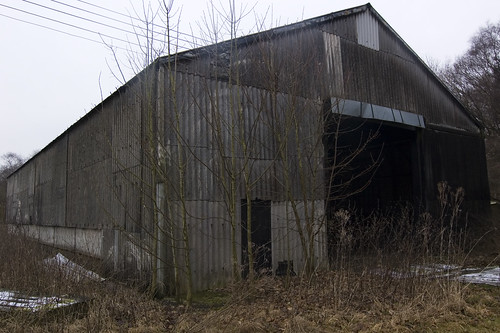
The only original building on Tech site 1 is this Marston shed, nowused by the estate management.
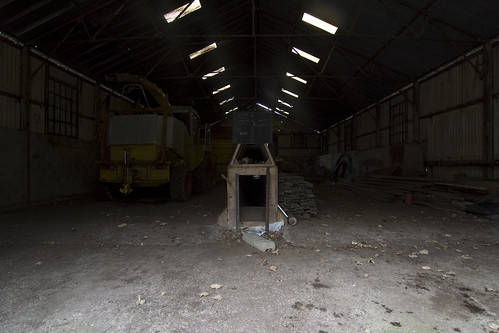
Looking in.
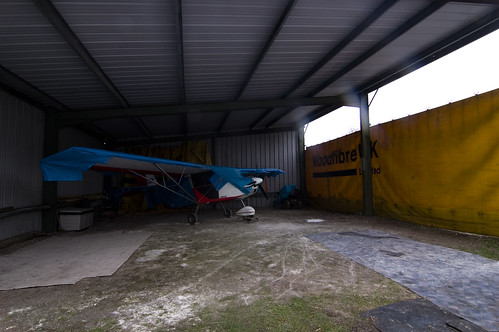
Nearby, this shelter houses one of the farmer's aircraft.
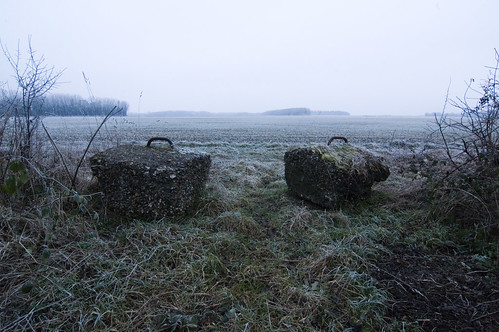
Some old roads are blocked off with aircraft tie downs.
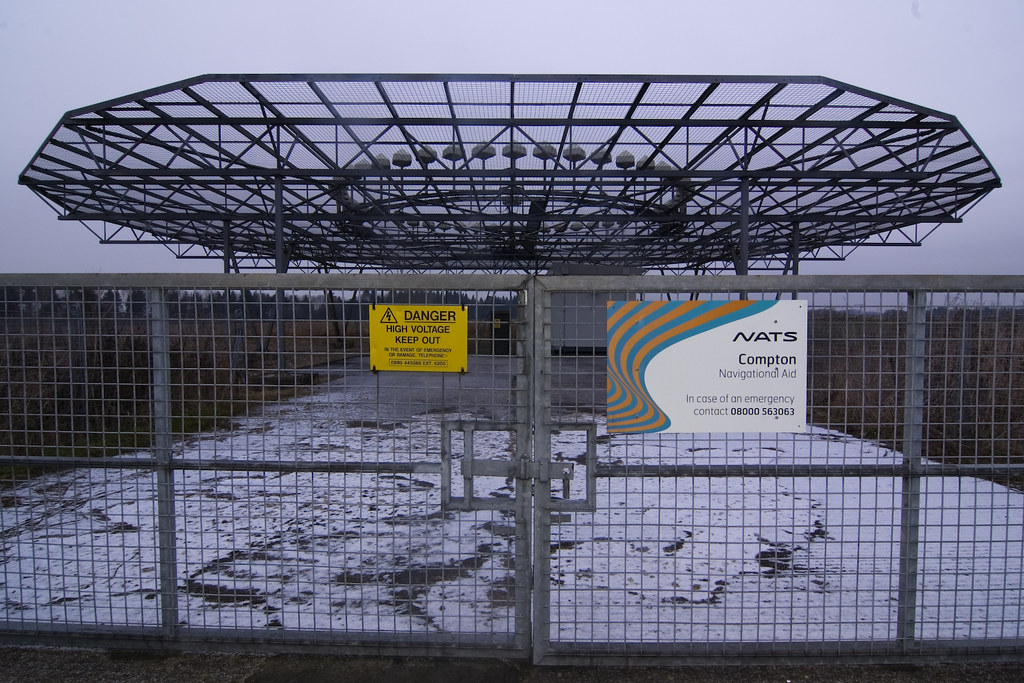
And finally, the site still retains another link to it's aviation heritage. The Compton Light Beacon is positioned in the middle of the airfield to help guide airliners into Heathrow.
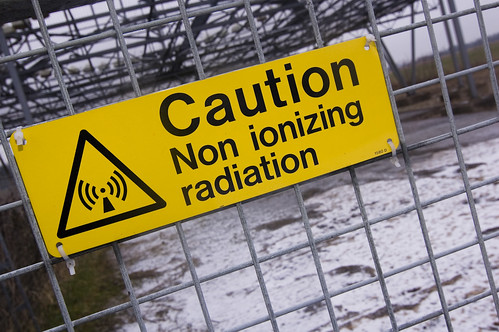
Mmmmm, Radiation...
That's it folks, cheers for reading!
Here is a link to Newage's report.
The airfield in West Berkshire was opened in the summer of 1940 and began it's role as a dispersal airfield and the home of 15 OTU (Operational Training Unit). Sorties flown were mainly day and night training flights in Wellington Bombers although the primary function of the airfield was to ferry the Wellingtons to Egypt, via Gibraltar and Malta.
On the 16th of September 1940 three bombs were dropped upon the airfield's metalled runways, apparently causing very minimal damage.
On the 4th March 1941 a wellington was attacked by a rogue German fighter as it approached to land.
The airfield was attacked most heavily on the 12th May 1941 with the Luftwaffe dropping 10 High Explosive bombs and 100 Incendiaries. This attack cost the airfield one Wellington and also damaged the flare path and the southern taxiway. This caused problems to RAF aircrews as there were several bombers in flight.
The airfield was used extensively as a glider training base during the latter part of the war, many glider pilots were trained here in preparation for D-Day. The base also had 33 Tiger Moths as training aircraft, and nowadays the airfield is still used by one (not an original from here) which belongs to the current farmer.
In 1945 13 OTU moved in with DeHavilland Mosquitoes and the airfield reverted to being a satellite of RAF Harwell, several miles to the North-West.
Today, little remains. The layout of the airfield can be picked out in Google Earth, and an interesting note is that all three runways converged at the same point. This made the airfield's operational ability quite precarious, as one well placed bomb could render all of the runways useless until repaired.
The site has long since reverted back to agricultural use as Haw Farm, being owned by the Yattendon Estates.There are five pillboxes extant, along with several bomb shelters. Various artefacts remind you of the site's wartime use, bits of twisted metal lie amongst piles of hardcore. Some taxi ways are still in fair quality, whilst others have fallen apart. The runways are barely discernable, one is grassed over and now used by the farmer for his tiger moth and 3 other planes. Another is covered by a strip of trees and another has been reduced to a small track along the north-eastern side of the site.
The nearby village of the same name has changed it's name from the wartime Hampstead Norris to Hampstead Norreys.

This overview of the airfield shows the remaining features. A Marston shed is extant in Tech site one, the other buildings there are 'modern' but disused animal sheds.

Looking along the North-Eastern runway

The first, and most obvious structure I could see was this air ministry pillbox(Pillbox1). It is in good condition, bar the rubble inside it. The original armoured door is in place as are several of the embrasure shutters.

Shutter, on the floor.

Internal view, note the roof shuttering left in situ.
The first air raid shelter I came across was this one(Shelter1). It is quite overgrown on the outside but inside it is very clean. To my surprise the escape hatch is still there, although somewhat corroded, as is the ladder.

The entrance

Looking inside the corrguated steel structure to the escape ladder

And looking to the entrance

Looking up the escape hatch

Looking Down the escape hatch.

I found this aluminium object nearby, it looks to be part of a wing structure... Could this be from the Wellington lost in the bombing???
The next structure I came across was another pillbox tucked into some woodland (Pillbox2), in similar condition

The gun mounts have been removed but some pieces still remain inside the embrasures.

The metal is so badly corroded these don't have long left.

One of the shutters

Internal view. There is an X shaped Blast wall and the armoured door was nearly 2 inches thick.

Next to this pillbox is the M+E Plinth, protected by blast walls.The original door is still in place.

The Elecrtical transformer housing.
The next pillbox (Pillbox3) is looking down a slope on the south-western side of the airfield towards the bomb store. I didn't venture down to the Bomb store as it was out of the way and it was beginning to get dark.

This pillbox has actually seen some action, but from the farmer's .243 winchester rifle instead.

A casing found inside.

Just to the south of this is a Trianco Air raid shelter (Shelter 2). This is in excellent condition and every piece apart from the brick outer blast walls is made from pre cast concrete.

A rusty stool just inside the entrance.

Looking inside.

Looking back to the entrance.

Manufacturers Logo.

Down the hatch.
Just south of that shelter was the third one, this is located by the entrance to technical site1. This shelter seems older and far more worn than the others. It is a long, double entrance shelter, without any escape hatches. The entrances are quite blocked with rubbish and are quite slippery and dangerous in the snow!

I couldn't believe how many trees were growing out of it.

The other entrance.

Internally the structure is still sound. The floor looked clean at first...

But on closer examination the floor is in fact covered in animal bones. It must be a fox's restaurant.

The only original building on Tech site 1 is this Marston shed, nowused by the estate management.

Looking in.

Nearby, this shelter houses one of the farmer's aircraft.

Some old roads are blocked off with aircraft tie downs.

And finally, the site still retains another link to it's aviation heritage. The Compton Light Beacon is positioned in the middle of the airfield to help guide airliners into Heathrow.

Mmmmm, Radiation...
That's it folks, cheers for reading!
Last edited:

































